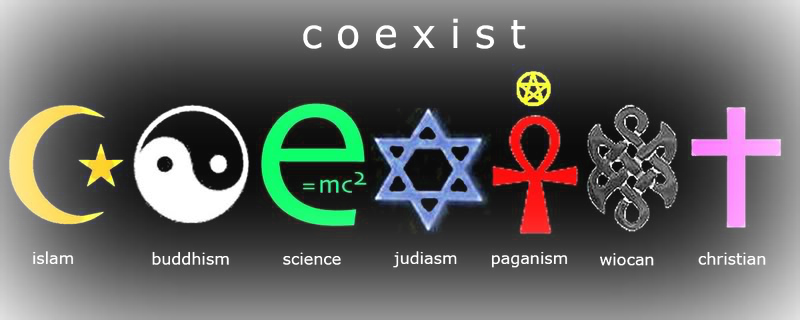Namaste. ನಮಸ್ಕಾರ. नमस्ते.
This little ritualistic gesture is a common Indian greeting. Irrespective of the language you speak, it is a respectful gesture symbolizing the thought “I bow to the lord within you”.
Madam Toastmaster, fellow toastmasters and guests,
Today I’d like to share with you some thoughts about the power and meaning of symbols in our lives.
I recently read an interview of a well-traveled, highly educated man of science who filled his house with symbols from various cultures and followed some highly traditional rituals. He explained “Rituals give good anchoring. Never underestimate the power of symbols in your life.”
I think that's true. A symbol is a very concise representation of a set of ideas. A ritual is a sequence of actions which are performed for their symbolic value. These actions are in no way arbitrary.
Our lives are shaped by symbols and simple rituals - be it personal, traditional or religious.
Let's examine some common symbols.

They say a picture is worth a thousand words. What does this symbol convey to you?
The Toastmasters emblem.
To me, this represents having fun with you guys here at EMC on Thursday afternoons.
This bumper sticker has left an impression on me.
Notice how it is made up of many religious symbols, each of which have their own unique meanings. Put together in this creative manner, they form the word "COEXIST". I interpret this to be symbolic of "Each religion paves a different path to the same end". Or, as a simple directive to "Live and let live".
Here is an Indian symbol of good luck : the Swastika.
You’ll see this painted on the walls of most shops and enterprises in India. People use this symbol to brand various items to increase their good luck. It is a positive symbol.
A slight variation of this symbol has the exact opposite effect.
The Nazi Swastika evokes strong negative emotions in all of us.
How about this?

The picture screams “pirate”! :)
On a cheery note, let's look at Amazon's smiley logo.

Through its simple logo, Amazon conveys its motto : Do business with Amazon and we'll make you smile with satisfaction.
Symbols need not be only 2-dimensional. 3D symbols are used in most classical forms of dance and in sign language. Other areas where symbols are widely used include traffic signs, alphabets in the script of any language and mathematics.
Symbols are an essential part of technology as well. We use them everyday in our PCs and smart phones as icons.
I don’t think I could live without my iPhone and the 20-odd apps that I use daily.
I LIKE this !!
All Facebook users know how frequently this symbol is used. 'LIKE' is used to communicate a whole spectrum of emotions such as "I love it!", "I agree" and "You have my support". I have even noticed people "LIKE'-ing obituary messages.
Rituals use symbols to reinforce ideas. Rituals may be performed on specific occasions or at the discretion of individuals. You may have an exclusive ritualistic way of greeting certain people – a handshake, a hug, a kiss, a verbal greeting or even calling out an insult as a way of greeting someone you’re very close to.
Here are some symbols that I grew up with.
The Rangoli is a traditional art form in India and is part of a daily morning ritual in most South Indian households. People wash their doorsteps and paint these patterns in front of their door as a way to ward off evil spirits and bring good luck.
According to Kundalini yoga, the seven yoga chakras represent the different states of consciousness / energy-levels. Each energy center is activated by performing certain routines (rituals). The goal is to gradually raise your awareness from the lowest chakra to the highest chakra leading to spiritual enlightenment.
Please take a moment to reflect on the simple rituals that you follow in your life. Every culture has its own set of unique symbols and some of us have developed our own personal ones. I’d love to hear about the symbols and rituals that hold meaning to you. Please share your thoughts with me.











